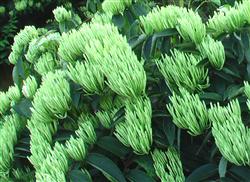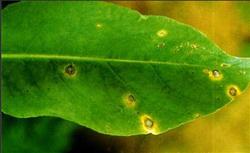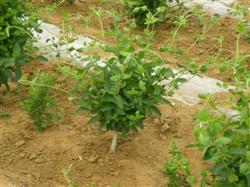Video of planting medicinal honeysuckle

Honeysuckle is a perennial evergreen vine, which has a variety of medicinal values. To cultivate medicinal honeysuckle, the following points should be done: 1. Select good varieties: medicinal honeysuckle requires strong branches, reasonable structure, more flowering times, more flowers, high quality and high yield. 2. Such as chicken claw flower and big hair flower are better medicinal varieties. 2. Choosing a place to build a garden: for planting honeysuckle, we should choose sandy loam land with open ground, loose soil layer, convenient drainage and irrigation, and rich humus as a planting garden, and we can also make use of sporadic plots such as the front and back of the house, the edge of the gully and the edge of the pond to deeply turn and improve the soil, applying 50 piculs of farm manure per mu to form a 1.2-meter-wide field. 3. Cultivate strong seedlings: honeysuckle mainly propagates by cutting. Before sprouting in early spring, the cuttings with four buds are selected, the lower leaves are removed, cut along with the cuttings on the prepared seedbed, shaded and watered, water is sprayed in the morning and evening in the dry season, watering according to the soil conditions during the day, sunshade is gradually removed after cutting rooting and long leaves, and 12% diluted organic fertilizer is watered every half month. With the growth of seedlings, the concentration of fertilizer should be increased, and it can be transplanted to the field after half a year. 4. scientific management of fertilization: before the germination of plants in early spring or before the cold wave in early winter. A trench or annular ditch was opened next to the plant, and 10 kg of rotten organic fertilizer, 0.1 kg of ammonium sulfate and 0.1 kg of calcium superphosphate were applied to each plant. The growth of seedlings was accelerated by topdressing rotten rarefied organic fertilizer and water for 3 times from May to June. In order to increase the number of flower stubbles, improve flower quality and yield, adult plants can also be sprayed with 0.5% potassium dihydrogen phosphate at the flower bud differentiation stage of each stubble. The ideal plant shape of medicinal honeysuckle is a small umbrella shrub with short and erect branches. This must be achieved through pruning. The specific method is to cut off the upper part of the trunk at a height of 30 cm, promote the bud germination under the cut mouth to form branches, retain 5 branches with uniform distribution and similar thickness, and then cut off the upper part of branches at all levels. Every year before sprouting in spring, a comprehensive garden cleaning should be carried out to cut off withered branches, rotten branches, weak branches, shade branches, roots and tillers, and centrally destroy them, so as to reduce the source of disease and the number of insect population. The main pests of honeysuckle are aphids and coffee tiger longicorn beetles. the former harms leaves and buds and should be controlled in time. The latter uses larvae to eat the xylem of the vine stem, resulting in a hole in the trunk. The control method is to carry out artificial hook killing in the larval stage, or to plug the hole with cotton balls soaked in dichlorvos solution, and then seal it with mud. the disease is mainly honeysuckle brown spot disease, which usually occurs seriously in summer, resulting in brown spot necrosis of leaves. Jinggangmycin spray was used in the early stage of the disease. 5. Harvesting and processing: the medicinal parts of honeysuckle are mainly flowers. When harvesting, we should look at both the flowers and the weather, so as to pick them at the right time. When the base of the flower is turquoise, the top is milky white, the color is bright and bright, it is the best sign for picking flowers, pick them when the dew is not dry on a sunny day, pick them gently, do not press them with your hands, in order to ensure the medicinal quality and performance of the flowers, the flowers picked on the same day should be dried in time, spread evenly and thinly on the mat on a sunny day, and let the sun dry naturally. Heating and drying on cloudy and rainy days, build a square drying room indoors, put a heating device at the bottom, and set up a layered drying rack with a spacing of 25 centimeters between each layer. Spread the flowers evenly on the baking utensils with a thickness of not more than 1 centimeter, and move them into the shelves. The drying temperature of honeysuckle was 30 ℃ 35 ℃ at the beginning, rising to 40 ℃ after 2 hours, and kept at 45 ℃ for 10 hours. After about 10 hours, most of the water in the flowers was discharged, and the baking temperature rose to 55 ℃. When the dried flowers are pinched and audible, scratched and broken, pure color, rich aroma can be. The drying process should be carried out continuously, drying and drying, and can not be stopped or turned at will. Because the drying method has many advantages, it can better ensure the medicinal value of flowers, so it is often used. It can also be dried gently and then baked until dry. Click to get more honeysuckle planting technology click to get more medicinal material planting technology
- Prev

Planting of Radix Isatidis: how to control diseases and pests of Radix Isatidis?
How to control diseases and insect pests of Radix Isatidis? Please introduce the common diseases and insect pests of Radix Isatidis, such as downy mildew, root rot, Pieris rapae, Plutella xylostella, etc., the following detailed control methods for reference: 1, downy mildew: the main harm to leaves and petioles. Pay attention to drainage, ventilation and light transmission; use 50% acetaminophen 1000 before and at the beginning of the disease.
- Next

Honeysuckle planting: how to water and fertilize honeysuckle?
How to water and fertilize honeysuckle? Hope that experienced netizens can refer to the following methods to fertilize and water honeysuckle: 1. The fertilization method of honeysuckle: in order to alleviate the contradiction between the growth and budding of honeysuckle and meet the needs of bud development, topdressing should be carried out after each harvest of buds.
Related
- Fuxing push coffee new agricultural production and marketing class: lack of small-scale processing plants
- Jujube rice field leisure farm deep ploughing Yilan for five years to create a space for organic food and play
- Nongyu Farm-A trial of organic papaya for brave women with advanced technology
- Four points for attention in the prevention and control of diseases and insect pests of edible fungi
- How to add nutrient solution to Edible Fungi
- Is there any good way to control edible fungus mites?
- Open Inoculation Technology of Edible Fungi
- Is there any clever way to use fertilizer for edible fungus in winter?
- What agents are used to kill the pathogens of edible fungi in the mushroom shed?
- Rapid drying of Edible Fungi

